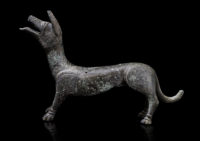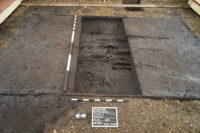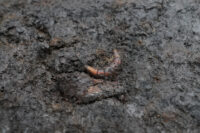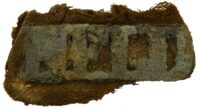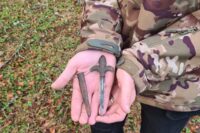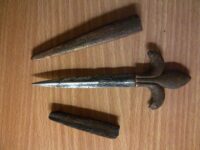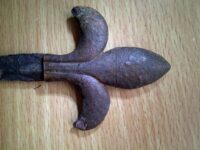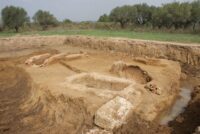 Archaeologists have unearthed eight tombs from the late Classical, early Hellenistic period on private property in the western Peloponnese municipality of Ilidos. The graves were of varied type — four cist graves lined with stones, three pithoi (massive clay vessels typically used for food storage but so large they could serve as coffins) and one coffin roofed with ceramic tiles — and range in date from the 4th to the 2nd century B.C.
Archaeologists have unearthed eight tombs from the late Classical, early Hellenistic period on private property in the western Peloponnese municipality of Ilidos. The graves were of varied type — four cist graves lined with stones, three pithoi (massive clay vessels typically used for food storage but so large they could serve as coffins) and one coffin roofed with ceramic tiles — and range in date from the 4th to the 2nd century B.C.
 One of the pithoi contained impressive grave goods: a richly decorated bronze vase with its original base and a bronze mirror. The vase has a floral design on its handles and is ornamented with lion heads between handles and rim. The mirror has a carved relief on the back. The style of the artifacts date the grave to the late 4th or early 3rd century B.C.
One of the pithoi contained impressive grave goods: a richly decorated bronze vase with its original base and a bronze mirror. The vase has a floral design on its handles and is ornamented with lion heads between handles and rim. The mirror has a carved relief on the back. The style of the artifacts date the grave to the late 4th or early 3rd century B.C.
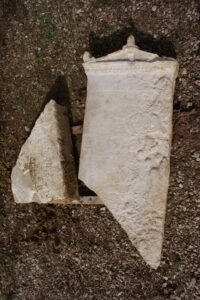 A tombstone with a gabled pediment is another of the stand-out finds from this excavation.
A tombstone with a gabled pediment is another of the stand-out finds from this excavation.
The burial grounds at Ilia have been a rich source for historians regarding ancient Greek burial practices. Since the ancient cemetery was discovered, over 200 grave sites have been unearthed there, many of which date from the Late Classical to the Hellenistic period.
Archaeologists have found a wealth of graves and funerary objects at Elis, helping them to piece together local funerary customs.
The site was occupied from the Middle Paleolothic (ca. 130,000 years before present) through the 7th century A.D. when it was destroyed by earthquakes. The ancient Greek city of Elis was said to have been founded in the 12th century B.C., and was established as the capital of the eponymous city-state in the 5th century B.C. It played a central role in organizing the Olympic Games (Olympia was in the Elis region) which granted it privileges from later conquerors like Philip II of Macedon who took the city in 343 B.C., around the time when the older of the eight tombs were built in the western necropolis. Elis was conquered by Rome in 146 B.C. and became part of the Roman province of Achaia.

